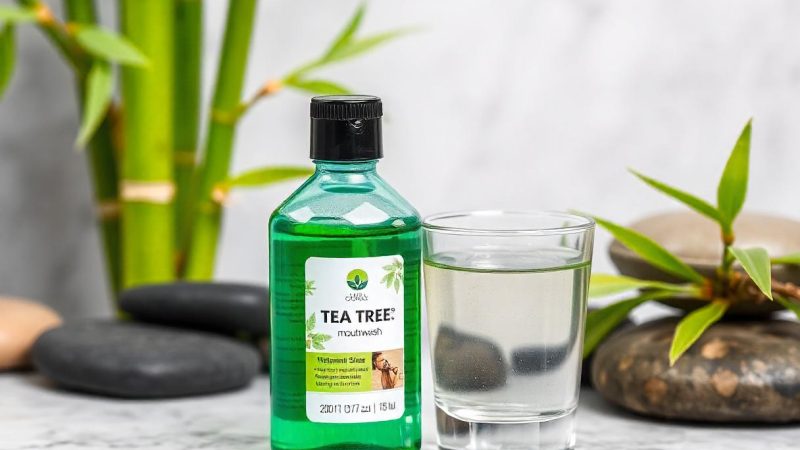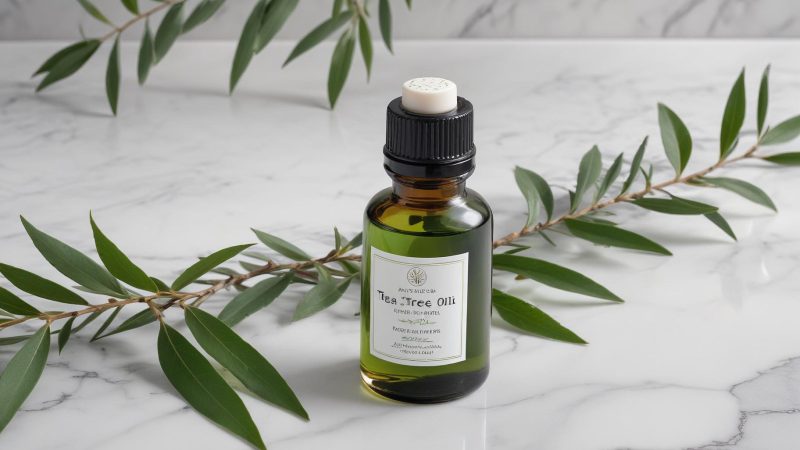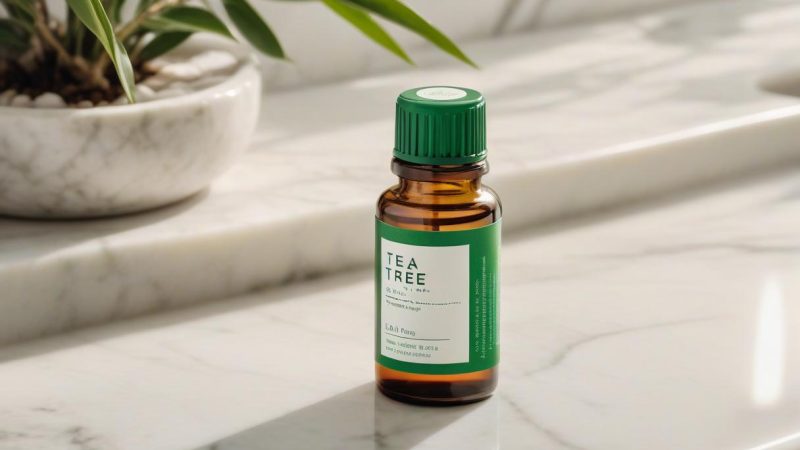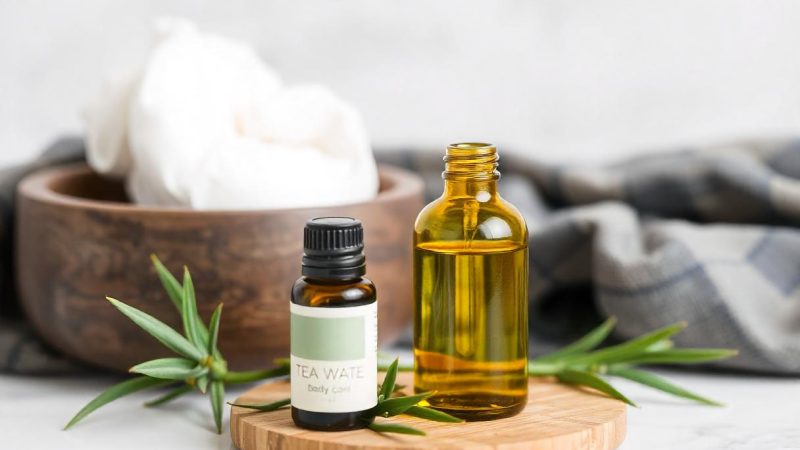Tea Tree Oil for Nail Fungus: How It Works, Application Tips, and Safety

Nail fungus, or onychomycosis, is a common and persistent fungal infection that affects the toenails or fingernails. Characterized by thickened, discolored, and brittle nails, nail fungus can be challenging to treat with conventional antifungal medications alone. Tea tree oil, a natural essential oil derived from the leaves of the Melaleuca alternifolia tree, has gained attention for its potential efficacy in treating nail fungus due to its antifungal, antimicrobial, and anti-inflammatory properties. This article explores how tea tree oil works against nail fungus, offers application tips, and outlines essential safety precautions.
How Tea Tree Oil Works for Nail Fungus
- Antifungal Properties
Tea tree oil is well-known for its potent antifungal properties, which make it effective against the fungi responsible for nail infections. The main active compound in tea tree oil, terpinen-4-ol, has been shown to disrupt the cell membranes of fungi, leading to their death.
A study published in The Journal of Clinical Microbiology demonstrated that tea tree oil effectively inhibits the growth of dermatophytes, the fungi that commonly cause nail infections. This antifungal activity makes tea tree oil a valuable option for managing nail fungus.
- Antimicrobial Action
In addition to its antifungal effects, tea tree oil has broad-spectrum antimicrobial properties that help prevent secondary bacterial infections. This is particularly important for nail fungus, as damaged and weakened nails can become susceptible to bacterial infections.
Research in Clinical Microbiology Reviews highlights tea tree oil’s ability to inhibit a range of microorganisms, supporting overall nail health and reducing the risk of complications from fungal infections.
- Anti-Inflammatory Effects
Nail fungus can cause inflammation around the affected nail, leading to redness, swelling, and discomfort. Tea tree oil’s anti-inflammatory properties help to soothe the inflamed area and reduce associated symptoms, promoting a more comfortable healing process.
A study published in The Journal of Dermatology noted that tea tree oil’s anti-inflammatory effects can help alleviate irritation and improve the appearance of the infected nail.
Application Tips for Tea Tree Oil
- Topical Application
Tea tree oil should always be diluted before applying it to the skin or nails to avoid irritation. A common dilution ratio is 1-2 drops of tea tree oil mixed with a carrier oil or solution.
How to Use:
- Mix 1-2 drops of tea tree oil with 1 tablespoon of a carrier oil (such as coconut oil, olive oil, or almond oil) or a few drops of an alcohol-based solution like witch hazel.
- Using a clean brush or cotton swab, apply the mixture directly to the affected nail and surrounding skin.
- Allow it to dry and avoid covering the nail immediately after application to ensure proper absorption.
- Apply 2-3 times daily until the infection clears, which can take several weeks to months depending on the severity.
- Tea Tree Oil and Vinegar Soak
Combining tea tree oil with vinegar can enhance its antifungal effects. Vinegar helps to create an acidic environment that is less hospitable to fungi, while tea tree oil targets the infection directly.
How to Use:
- Mix 1 tablespoon of vinegar with 2-3 drops of tea tree oil in a small bowl of warm water.
- Soak the affected nail in the solution for 15-20 minutes.
- Pat the nail dry thoroughly after soaking.
- Repeat this treatment 2-3 times daily.
- Tea Tree Oil and Baking Soda Paste
A paste made from tea tree oil and baking soda can help address nail fungus and improve overall nail health. Baking soda has antifungal properties and helps to exfoliate and cleanse the affected area.
How to Use:
- Combine 1 tablespoon of baking soda with 2-3 drops of tea tree oil to form a paste.
- Apply the paste to the affected nail and let it sit for 10-15 minutes.
- Rinse off with lukewarm water and pat dry.
- Use this treatment once or twice daily.
Safety and Precautions
- Dilution is Essential
Tea tree oil is highly concentrated and can cause skin irritation or allergic reactions if applied undiluted. Always mix tea tree oil with a carrier oil or suitable solution before applying it to the nails and surrounding skin. Perform a patch test on a small area of skin to check for any sensitivity or allergic reactions before using it more broadly.
- Consult a Healthcare Professional
While tea tree oil can be an effective adjunct treatment for nail fungus, it should not replace conventional antifungal medications prescribed by a healthcare provider. Consult with a dermatologist or healthcare professional before starting tea tree oil treatment, especially if you have other health conditions or are pregnant or breastfeeding.
- Avoid Sensitive Areas
Avoid applying tea tree oil to broken or irritated skin, as this can increase the risk of irritation. Be cautious when using tea tree oil around sensitive areas, such as the cuticles or skin surrounding the nail.
- Monitor for Side Effects
Some individuals may experience side effects such as redness, itching, or a burning sensation. If any adverse reactions occur, discontinue use and consult a healthcare professional.
- Consistency is Key
Treatment for nail fungus can be a lengthy process, requiring consistent and prolonged application of tea tree oil. Ensure to follow the recommended application regimen and be patient, as visible improvements may take several weeks or months.
Final Thoughts
Tea tree oil offers a natural and effective option for managing nail fungus, with benefits including antifungal, antimicrobial, and anti-inflammatory effects. When used correctly, tea tree oil can help combat the fungi responsible for nail infections, soothe inflammation, and prevent secondary infections. However, it is essential to use tea tree oil with proper dilution, follow safety precautions, and consult with a healthcare provider to ensure a comprehensive and effective treatment plan.
Incorporating tea tree oil into your nail fungus treatment routine can enhance relief and support the healing process. Always adhere to safety guidelines and seek professional medical advice for the best outcomes in managing nail fungus.
Sources:
- Carson, C. F., & Riley, T. V. (1995). Antifungal activity of tea tree oil and its components. The Journal of Clinical Microbiology.
- Clinical Microbiology Reviews. (2006). Antimicrobial properties of tea tree oil and its clinical applications.
- The Journal of Dermatology. (2000). Anti-inflammatory effects of tea tree oil in dermatologic conditions.
- Journal of the American Academy of Dermatology. (2006). Treatment of onychomycosis with tea tree oil.






